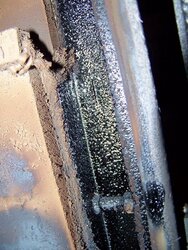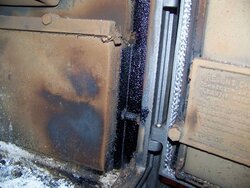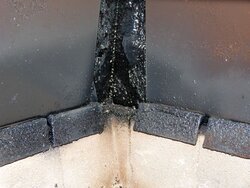I am still in the learning curve on my Woodstock Keystone on damper settings vs amount of wood in the firebox, size and quality of it.
Sometimes on a night burn, I cut the damper back a tad to much and the front glass darkens and I can see black shinny creosote on the firebox and especially the door.
After a brief time with a hot fire, the glass clears-up and the coating in the firebox goes away or turns to a very fine semi-light brown powder.
The cat is on during these smoldering overnight burns and I'm wondering what's going on downstream after the cat sees the smoke. Is the outlet side of the stove pipe and chimney much cleaner than the inlet side of the firebox or does it gloss-up with creosote with these slow burns?
Haven't pulled any pipe to have a look-see - just courious as to what you folks are finding.
BTW, my Keystone is giving me some great burn times overnight. 8 hrs is very easy with a stove top temp at 250ish in the morning with a good bed of red hot embers to rekindle the fire. Also, the ash pan is pretty slickery too.
Thanks!
Bill
Sometimes on a night burn, I cut the damper back a tad to much and the front glass darkens and I can see black shinny creosote on the firebox and especially the door.
After a brief time with a hot fire, the glass clears-up and the coating in the firebox goes away or turns to a very fine semi-light brown powder.
The cat is on during these smoldering overnight burns and I'm wondering what's going on downstream after the cat sees the smoke. Is the outlet side of the stove pipe and chimney much cleaner than the inlet side of the firebox or does it gloss-up with creosote with these slow burns?
Haven't pulled any pipe to have a look-see - just courious as to what you folks are finding.
BTW, my Keystone is giving me some great burn times overnight. 8 hrs is very easy with a stove top temp at 250ish in the morning with a good bed of red hot embers to rekindle the fire. Also, the ash pan is pretty slickery too.
Thanks!
Bill





